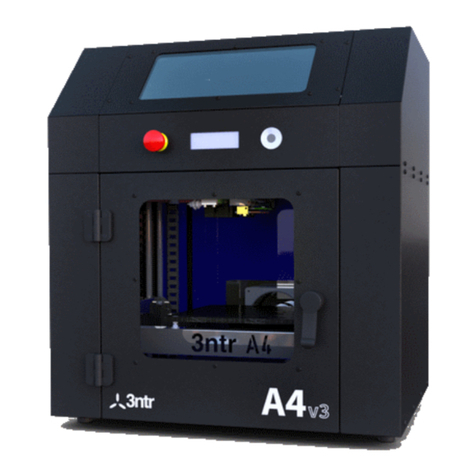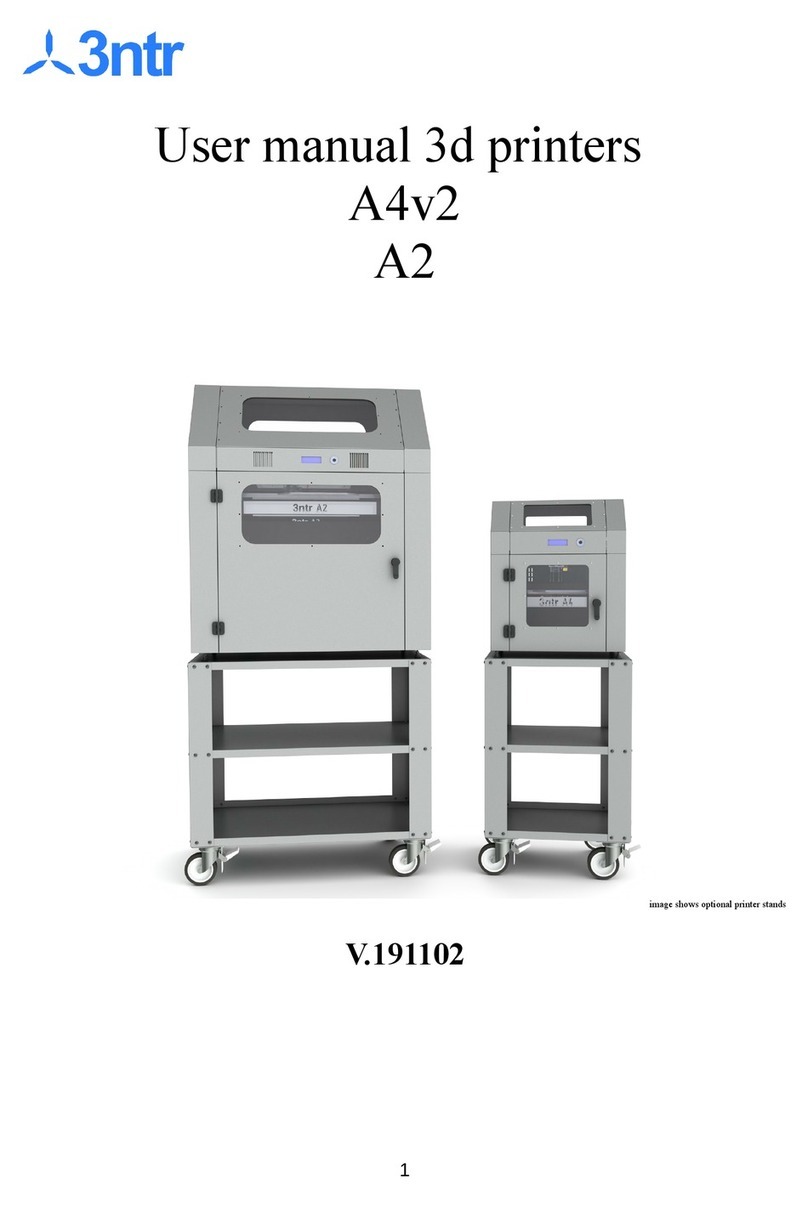
Important safety advice
Your printer has been built with user safety as main concern, yet it must NOT be
used by individuals with reduced mental or physical abilities.
This printer is not a toy, and printing area must be kept locked in presence of
children or people with serious mental problems.
•The A4 printer is meant to be used by fully responsible and
knowledgeable people, as several safety issues must be considered:
•Risk of burns: hot surfaces are involved into the printing process. To
minimize risks, be sure not to access any part inside the printing area
while printer is working. Once printing process is finished, wait until
printed part(s) cool down to room temperature, or use protective gear
(gloves) to remove finished prints.
•Risk of pinching – machine can suddenly start: even if the power of
actuators is low, the speed is high enough to hurt. Don't access machine
until printing process isn't completed -or- the machine is remotely
actuated (i.e.: using a print server).
•Risk of fire: don't use any flammable substance to clean the machine
inner parts when printer parts are warmed.
•Risk of toxic fumes: be sure to use recommended settings for the
polymer(s) being used. Overheating may develop toxic fumes. Use
printer in a well vented room.
•Electromagnetic compliance: this is a class A product. In a domestic
environment this product may cause radio interference in which case the
user may be required to take adequate measures.
•Always turn OFF power before attempting any maintenance and wait
until the printer parts are cooled at room temperature.





























